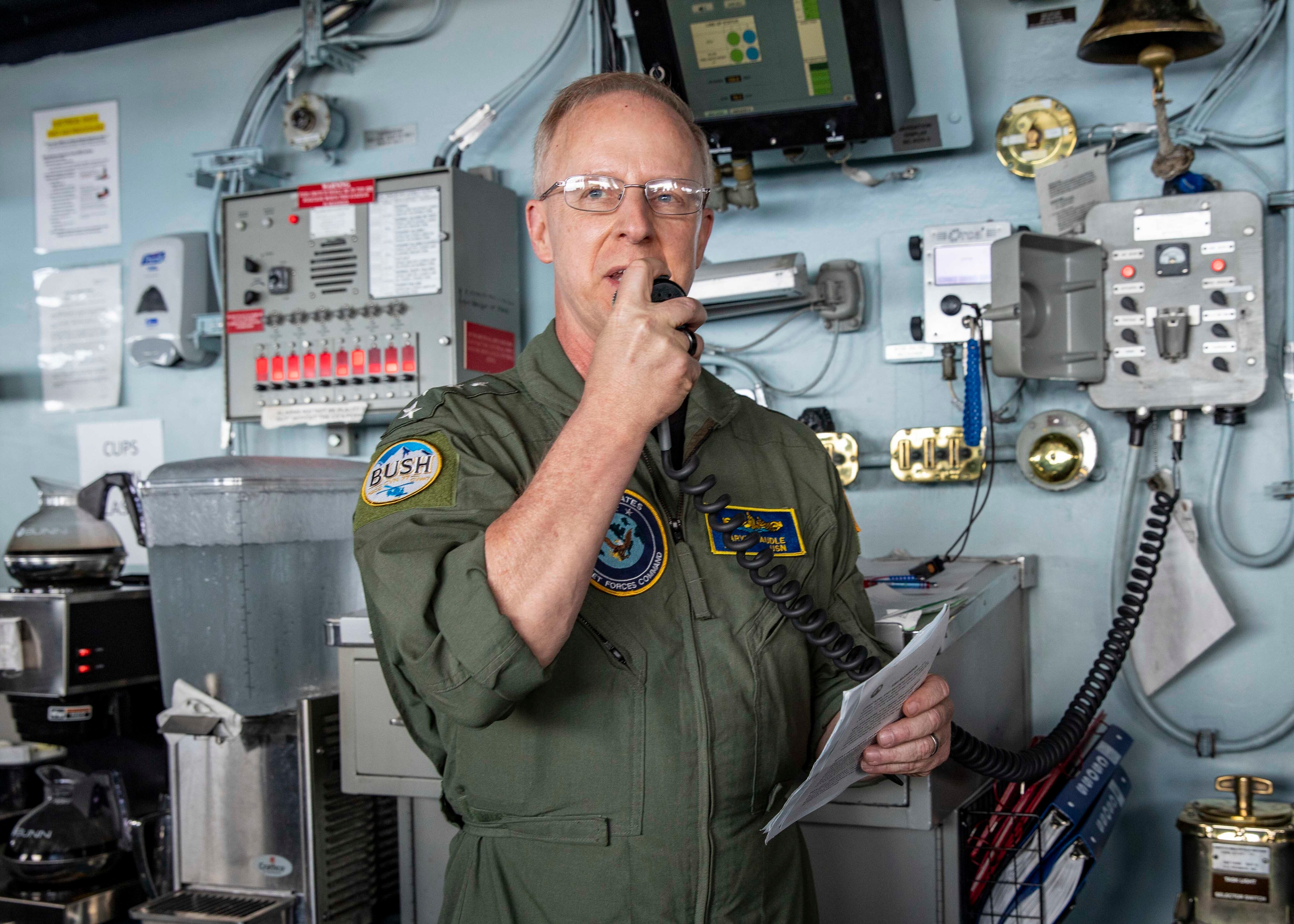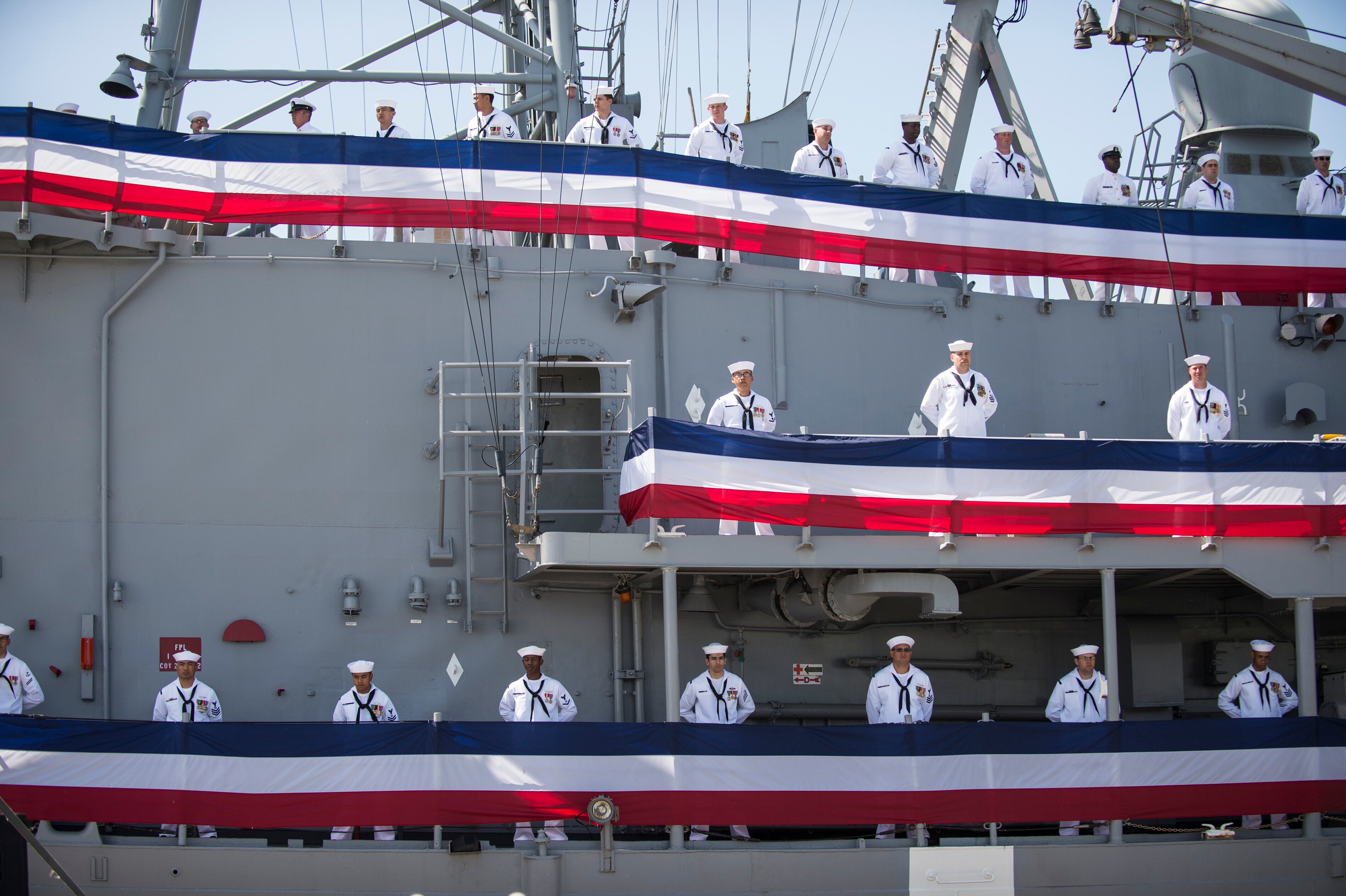NORFOLK, Va. — U.S. Fleet Forces Command head Adm. Daryl Caudle is working to develop a data-informed decision-making process that would settle ship decommissioning debates between the Navy and Congress.
Under the existing process, the Navy unveils in its annual budget request which ships it intends to decommission each fiscal year. By that time, the service has already determined which ships need to be crewed, which will need maintenance availabilities, which will need materiel for systems upgrades and more — which is all included in the budget for that year and years beyond.
If Congress opts to spare a ship from early decommissioning, it requires the Navy the adjust budget lines for personnel, training and operations, maintenance, logistics and more.
Caudle says this could be avoided.
“When they get in the window of their decommissioning, we start decrewing [a ship], start taking parts off it to cannibalize for other units, and get it to its place where it’s going to decommission and come off the registry,” he told Defense News in a March 30 interview. He said Congress blocking a ship from being decommissioned is “the most horrible thing you could do to a commanding officer and the crew.”
“If you can actually come together on a decommissioning plan that’s objectively based — even if some of those ships are not to the service life, there could be reasons why it did not make that — then it can be objectively looked at and critiqued and improved,” he added. “But we ought to be very one-minded on whether or not we agree to that list.”
Caudle said that if the Navy and Congress can agree on a decommissioning plan, both sides must stick to it.
“Two things should come from that: The Navy fully funds, crews, organizes, modernizes to the last day. You get it to the bitter end; we don’t go and short-circuit that in any way,” he said. “And Congress agrees we’re not going to [keep the ship in active service] when it gets to that date.”

Caudle told Defense News the first step he’s taking is trying to create a metric that considers the ship’s combat power, including its weapons systems, sensor package and magazine size; its level of modernization, including recent updates and lethality enhancements; and its material condition, major degradations and potential depot repair challenges.
These three factors are considered against how much money it would take to get the ship combat-ready, and how many more deployments the ship would be able to make for this investment.
For example, if it will take $200 million to fix up a ship for one more deployment before its planned end of life, is that combat power worth the money, or can the Navy decommission it early?
“Nobody has any question about decommissioning a nuclear submarine or a nuclear aircraft carrier; when the fuel is over, it’s done,” Caudle said. “Everybody slaps the table on that plan. It’s our surface navy that lives in this purgatory, that we could do more things with it” if only the Navy were willing to pay to keep it in the fleet.
“I’m trying to actually help build that business model that allows us to objectively grade out a ship in an objective way on its combat power versus the cost of the combat power.”
Caudle said he’s been working with the Center for Naval Analyses to create a figure of merit, or scoring metric, to assign to ships being eyed for potential early retirement. He’s also partnering with two deputy chiefs of naval operations, for warfighting requirements and capabilities and for fleet readiness and logistics, on this effort.
Once a scoring system is established, the Navy would have to work with Congress to agree upon a process that looks at ship decommissioning debates at the most appropriate time, rather than during the annual budget talks.
“Mature organizations have a divestment strategy that’s agreed upon — if you look at Congress as our board of directors, our board should agree with our divestment strategy. It shouldn’t be last-minute,” the admiral said.
Megan Eckstein is the naval warfare reporter at Defense News. She has covered military news since 2009, with a focus on U.S. Navy and Marine Corps operations, acquisition programs and budgets. She has reported from four geographic fleets and is happiest when she’s filing stories from a ship. Megan is a University of Maryland alumna.





